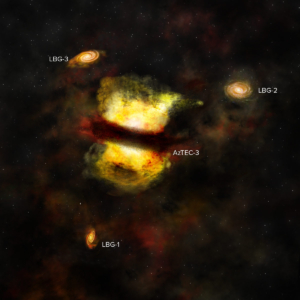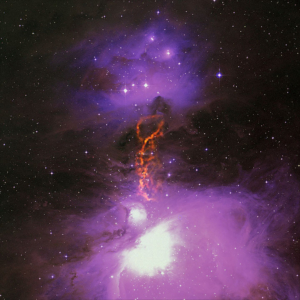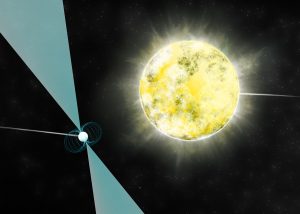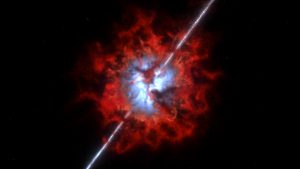ALMA finds evidence for galactic merger in a protocluster more than 12.5 billion light-years away.
Radio Telescopes Unravel Mystery of Nova Gamma Rays
Highly-detailed radio-telescope images have pinpointed the locations where a stellar explosion called a nova emitted gamma rays, the most energetic form of electromagnetic waves. The discovery revealed a probable mechanism for the gamma-ray emissions, which mystified astronomers when first observed in 2012.
Orion Rocks! Pebble-size Particles May Kick Start Planet Formation
Star-forming filaments in Orion are brimming with dust grains of unusual size.
Remarkable White Dwarf Star Possibly Coldest, Dimmest Ever Detected
A team of astronomers using the GBT and VLBA has identified possibly the coldest, faintest white dwarf star ever detected.
Gigantic Explosion Buried in Dust: ALMA Probes Environment around Gamma Ray Bursts
Researchers using ALMA report the first-ever detection of molecular gas — the fuel for star formation — in two galaxies that were previously rocked by gamma ray bursts.
‘Death Stars’ in Orion Blast Planets before They Even Form
A team of astronomers from Canada and the United States has used the ALMA Telescope to study the often deadly relationship between highly luminous O-type stars and nearby protostars in the Orion Nebula.










